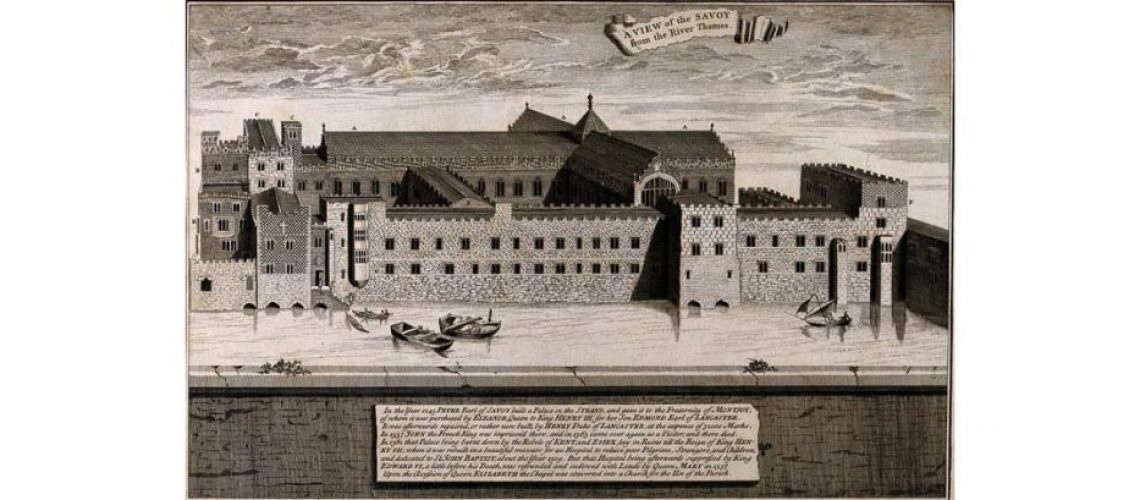Long gone are the grand houses that once lined this thoroughfare linking London’s centres of government and commerce, but traces of their past grandeur can still be found, as Felicity Wenzel explains
Walk along the Strand today and you would be forgiven for thinking it is just one of the many shopping roads that make up central London. Yet go back to the Middle Ages, and this would have been the most important thoroughfare in an otherwise rural area. This was the artery of trade and power linking two great cities: the City of London and the City of Westminster.
Imagine the Strand as a route for the processions of the powerful. Think of Cardinal Wolsey showing off on his way to the Palace of Westminster from Chancery Lane. Charles II riding gallantly to Whitehall on his restoration to the throne in 1660.
A clue to what the area used to be is in the name. Once an Anglo-Saxon settlement, the word Strand derives from strond, the Anglo-Saxon word for beach (variations of which are still used for waterside roads in Norwegian, Dutch and German towns today). Before London’s 19th century embankments were built, the river’s shorelines sat much further inland, making this neighbourhood, for a few centuries at least, London’s medieval riviera, palaces jostling for position the Thames.
Sitting in between two powerful centres of trade and government made this prime real estate. Villas, mansions and palaces sprung up, with the Strand on one side and the river on their other, the second homes of the wealthy and powerful lords, bishops and abbots of the outlying counties. They are now long gone, replaced or updated in the 18th and 19th centuries. But there are still signs of their existence. John of Gaunt’s magnificent Savoy Palace sat where the famous hotel now stands. It was destroyed in the Peasant’s Revolt of 1381, but the name stuck.
Edward Seymour’s Tudor-era Somerset Place was rebuilt by the Georgians as today’s grand Palladian Somerset House. And for a clue as to where the river once met the shore in the 17th century you can see the remnants of York House in today’s Embankment Gardens, where stands the solitary York Watergate, which was the entrance for visitors arriving on their barges (private barge was the aristocratic way to arrive on London’s silver watery highway).
Another memoir left over from York House is a spirit of aristocratic ego, after George Villiers, Duke of Buckingham, sold it to developers in 1672 on the condition that the surrounding streets were named George Street, Villiers Street, Duke Street, Of Alley and Buckingham Street. Only Villiers Street now survives.
Today, there are exciting hidden gems to be found on the Strand that highlight our relatively more modern history. The India Club, a beautifully nonchalant 1940s colonial-era curry house, sits at the top of a winding staircase near the entrance to Somerset House and is considered to have been one of the favourite meeting spots of the India League, who campaigned for the country’s eventual independence in 1948. The décor is no nonsense, the food is classic and the sense of history is palpable.
Over the road from the Club is the church of St Mary Le Strand, where Charles Dickens’ parents were married in 1809, and a little further along is the closed entrance to the disused Strand Underground Station, also known as Aldwych Station. Take a tour organised by The London Transport Museum and you can see where Londoners sheltered during the Blitz and where scenes from The Darkest Hour and V for Vendetta were filmed. The beautiful tiling on the platform walls was not just for aesthetics either. The ingenious designers used unique patterns and colourings at each station to help illiterate Londoners and foreign visitors navigate the Tube network.
The Strand began as the place between two centres. Through the twists and turns of history, it has become a centre of its own.
__________________________________________________
Pomp and Power: a Virtual London Tour – April 18 and April 25
At the western end of the Strand is the City of Westminster, which boasts not only the the Houses of Parliament, but also the National Gallery in Trafalgar Square and a host of royal palaces, including Buckingham Palace. To learn more, join one of our virtual tours on April 18 and April 25:
For details and to book, visit:
April 18, https://pomp-and-power_april18.eventbrite.co.uk
April 25, https://pomp-and-power_april25.eventbrite.co.uk
Image: The church and hospital of Savoy, London: view from Southwark. Engraving by G. Vertue, 1750 (Credit: Wellcome Collection. Attribution 4.0 International (CC BY 4.0))

